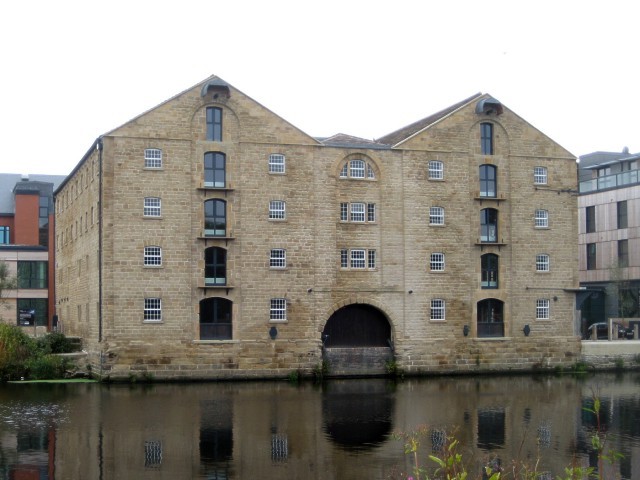Kaye’s Mineral Line, the Denby Grange Railway, was a standard gauge mineral line built to serve the pits that were owned by Sir John Lister Lister Kaye of Denby Grange in West Yorkshire. The pits, CaphouseEx-colliery in Overton, near Wakefield, West Yorkshire, now the National Coal Mining Museum for England., Prince of Wales, and the Victoria were linked by the railway and became the Denby Grange Collieries.
The line between Caphouse and Calder Grove, about five miles (8.0 km) long, was loco-hauled between Caphouse and Hope shafts, had four rope-worked inclines, two tunnels and two zigzags on the loco-hauled lower section below the Victoria Pit. The line was linked to the Lancashire & Yorkshire Railway at Calder Grove and to coal staithes on the Calder and Hebble Navigation
Constructed between 1758 and 1834, the navigation makes the River Calder navigable between Sowerby Bridge and Wakefield in the West Riding of Yorkshire.. The line was disused in the 1940s but the National Coal BoardStatutory corporation created to run the coal mining industry in the United Kingdom under the Coal Industry Nationalisation Act 1946. and British Coal used part of the lower section at Calder Grove until 1993 as British Oak Disposal Point.
Rail line
The shafts of the Lister Kay pits were close to the new line of the Wakefield to Austerlands turnpike (A642) in Overton which was built in 1830.[1] Lister Kaye’s Denby Grange Collieries had no rail access to the Calder and Hebble Navigation even though Milnes’ Flockton CollieriesFlockton Collieries comprised several pits, some started before 1700, around Flockton and Middlestown between Wakefield and Huddersfield in the West Riding of Yorkshire. tramway passed adjacent to Caphouse Colliery. No agreement was made to use the tramway, possibly because of competition between the companies.
John Marsden, a Wakefield lawyer who had considerable experience in managing the colliery interests of several landed estates, took over at Denby Grange in 1952. Coal traffic to the navigation passed toll bars at Overton and Horbury Bridge adding considerably to transport costs. Marsden entered into negotiations with the turnpike trustees to construct a tunnel under the road to facilitate a line to Calder Grove. He borrowed £12,000 to build a railway to the navigation, five miles (8.0 km) distant at Calder Grove and negotiated wayleaves and leased more coal under the land along the route.[2] The venture would eventually cost about £30,000. The line was built to serve the current pits and others that would be built along the line.[3]
The first contracts to build the line were let in March 1853 and the railway was operational the following year. Two locomotives were bought for the line, an 0-4-0 engine Solferino and an 0-6-0 Balaklava.[4] Most of the line closed in the 1940s,[5] and only the section at Calder Grove remained active.[6]
Route
The railway, in six sections, made use of locomotives and stationary engines to move coal from pithead to Calder Grove. The first section was where coal was loaded at Caphouse and drawn towards a shunting neck close to Hope Pit by locomotive.[7] Here the wagons were reversed and attached to rope haulage, before being pulled through the tunnel under the turnpike and uphill through a deep cutting, over an embankment, under Grange Lane and Hardcastle Lane and through a shallow cutting to the top of the first incline, where the first engine house was located.[8] The third section, also rope-hauled, was down a straight incline through the woodland towards the site of the future Prince of Wales Pit in Stonycliffe Wood.[9][a]It was known locally as Wood Pit and in 1943 was renamed Denby Grange Colliery. From there, the next section, another rope-hauled, short but steep incline led to the second engine house.[3]
The last two sections took the line downhill towards the navigation. The fifth section passed through a quarter-mile long tunnel at Stocksmoor towards the Victoria Colliery which was being sunk in Little London near South Lane in Netherton in 1854. The gradient of the last section was eased by using reversing necks or zigzags so that locomotives could work the final stretch to the navigation coal staithes at Calder Grove or exchange sidings with the Lancashire and Yorkshire Railway’s Barnsley Branch.[10]


